Animal enthusiasts and adventure lovers would be thrilled to visit the Chengdu Research Base of Giant Panda Breeding, as it is a wonderful experience. In this blog, I will explain the most interesting aspects of the conservation center, well-known for its research and protection of giant pandas. Discover the enrichment of the research base and the beautiful surroundings that are friendly to the pandas. Understand the history and mission of the research base and strategies to optimize your travel experience. Learn interesting facts about giant pandas, their attitude, and the efforts to conserve them as a national treasure. While planning for your trip or if you are just interested in these wonderful animals, this article will help you understand the world of giant pandas in Chengdu.
What Can You See at the Chengdu Panda Base?
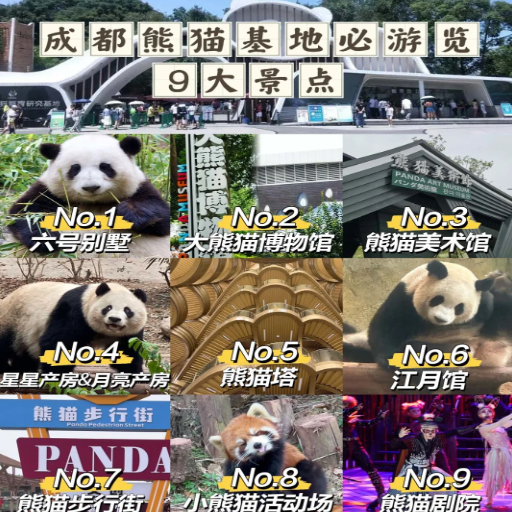
What Can You See at the Chengdu Panda Base
In Chengdu Panda Base, red and giant pandas can be seen in realistic ecology where they feed, exercise, and rest. The base boasts panda-reared red and giant pandas ranging from toddler cubs and juveniles to adult pandas. Pandas are native and adorable creatures of China. The base facilities offer recreational areas like exhibits on panda history, research, and conservation, an impressively picturesque museum, well-ordained bamboo forests, vivid wildlife, and peaceful, freshly-scented walking paths. These places provide opportunities to appreciate and learn about these remarkable animals and the measures to ensure their survival.
Exploring the Research Base of Giant Panda
- What are the main attractions at the Research Base?
The most interesting marked spots are the Panda Research and Conservation Exhibits, the Red Panda Display, and the Giant Panda enclosures for adults and cubs. The museum offers the most informative giant pandas, and the adorning bamboo paths grant guests an unparalleled natural experience.
- What are the facility’s hours of operation?
The Research Base is generally open from 7:30 a.m. to 6:00 p.m. However, browsing its website or calling to reconfirm updated hours is always a good idea.
- How can I take part in any conservation efforts?
Visitors can support panda conservation efforts by donating funds or participating in volunteer programs organized by the research center. Some of these may include feeding or cleaning duties in a training environment with staff on the ground.
- What season or period is best to visit?
The ideal time to visit would be during the early morning when they are being fed, as this is the time with the highest activity level. At this time, it is quite possible to see their playful sides.
- What are some technical details regarding the conservation of pandas in the base?
Habitat Size: Specially designed pens that replicate a panda’s natural habitat range from 4,000 to 8,000 square meters for each panda.
Diet: Every panda consumes 20 to 40 kilograms of fresh bamboo, frost-enriched biscuits, and formulated fruit.
Breeding Program: The base has populations of pandas guaranteed by sustainable means through modern reproductive technology such as artificial insemination.
Healthcare: Scheduled vet examinations with a fully equipped medical facility for complicated surgical procedures that are uniquely designed.
Dealing with these components, The Research Base of Giant Panda remains at the forefront of world panda research, education, and conservation.
Observing Giant Pandas in Their Natural Habitat
Watching giant pandas in the wild is a stunning sight and an experience that fuses wildlife tourism with education. They live in the bamboo forests of China’s Sichuan, Shaanxi, and Gansu provinces, between 1500 and 3350 meters above sea level. These areas have a rich supply of cool and damp climates. If one wishes to see pandas in their natural habitat, recently constructed reserves such as Wolong National Nature Reserve and the Qinling Mountains are the best places to visit.
Wild Pandas are notoriously antisocial, often feeding on bamboo for 10 to 16 hours. Additionally, they must consume 12 to 38 kilograms of bamboo daily for sustenance. Hunting their behaviors requires time and perseverance as they move slowly and are very difficult to spot.
Local conservation programs provide guided eco-tours that are excellent for novice panda watchers because they disturb the pandas’ habitat as little as possible. In most cases, eco-tours blend hiking with lectures from an authority on the subject, enriching and making the entire experience eco-friendly. To avoid stressing the animals, it is recommended that you step back at least 50 feet (15 meters) and use high-powered binoculars. The rigid conservation efforts employed within these habitats aid in conserving the pandas and the biodiversity of the surrounding ecosystems.
Discovering the Panda Museum and Educational Exhibits
The Panda Museum is unique in that it combines conservation programs with captivating displays of the Giant Panda. Its many exhibits include their anatomy and behavior and even the history and preservation of Pandas, showcasing their multimedia installations. The museum has informative content because it has interactive exhibits where you can step inside the panda habitats, learn what they eat and their dietary needs, such as bamboo, and learn about global conservation efforts.
You should consider sight planning and operational hours between 9 and 5 and buying a ticket in advance if possible. Many museums have a limited daily capacity. Reserve 2 to 3 hours to view the exhibits, as thoroughly enjoying them takes time. Accessibility is considered, and wheelchair ramps and audio guides are available for different users. The museum also incorporates eco-friendly practices, such as paperless tickets and low-energy-consuming exhibits, integrating sustainability throughout the visit.
When is the Best Time to Visit the Chengdu Research Base of Giant?
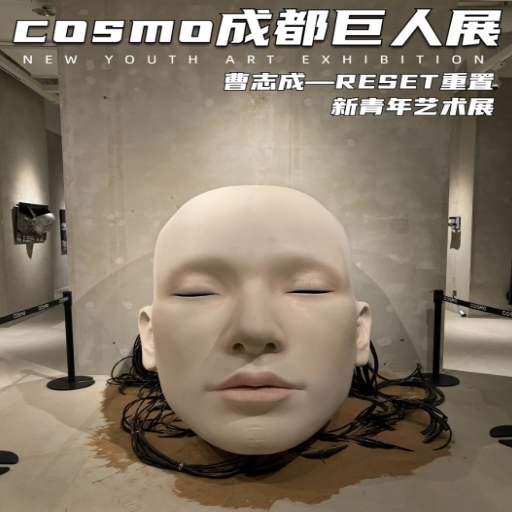
When is the Best Time to Visit the Chengdu Research Base of Giant
The best time to visit the Chengdu Research Base of Giant Pandas is early morning, ideally between 7:30 and 9:30 a.m. During these hours, the pandas are most active, feeding, playing, or exploring their enclosures. Visiting on weekdays is also recommended to avoid larger weekend crowds and ensure a more relaxed experience.
Understanding the Opening Hours and Seasonal Tips
The Chengdu Research Base of Giant Pandas is open daily from 7:30 AM to 6:00 PM, with the last entry permitted at 5:00 PM. Arriving early allows you to observe the pandas during their most active hours and helps avoid long queues at the entrance.
Seasonal Tips:
- Spring and Autumn (March-May, September-November) are the most favorable times to visit due to mild weather and comfortable temperatures ranging from 50°F to 75°F (10°C to 24°C). Pandas are likelier to be active during these seasons, and the surrounding bamboo forests are lush and vibrant.
- Summer (June-August): While the pandas may retreat indoors during the heat, morning visits are still optimal. Bring sunscreen and stay hydrated as temperatures rise above 85°F (29°C).
- Winter (December-February): Cooler weather, with temperatures averaging between 40°F and 60°F (4°C to 15°C), keeps the pandas more energetic. Crowds are typically smaller during this season.
Planning your visit around these key details ensures an enjoyable and memorable experience at the research base.
The Best Time to See Pandas Active
The mornings, between 8 AM and 11 AM, are the most favorable to pandas as they actively feed and play during this time. This fits into their natural behavioral cycle as they are inactive during the afternoons and need to rest. The best times to visit would be spring or autumn, as these are moderately cool and suitable for travel when pandas are the most active. Specifically, in spring, pandas indulge in their favorite food around March-May: bamboo shoots. From September to November, the weather shifts to milder in autumn, making exploring comfortable.
- Optimal Viewing Time: 8 AM – 11 AM
- Ideal Seasons:
- Spring (March-May): Temperatures range from 50°F to 75°F (10°C to 24°C). Bamboo shoots are abundant, keeping the pandas busy.
- Autumn (September-November): Temperatures range from 55°F to 70°F (13°C to 21°C), offering ideal weather.
- Avoid Peak Heat: During summer (June-August), the temperature is often surpassed at 29°C, 85°F. As activity levels drop during peak heat, the pandas go into hiding.
- Winter Highlights (December-February): The cooler weather gets the pandas moving, but the icy mornings keep them lethargic.
Time your visit accordingly, and you will increase your chances of seeing pandas jog in their natural habitat, making it an unforgettable experience.
How to Get to the Chengdu Panda Base?
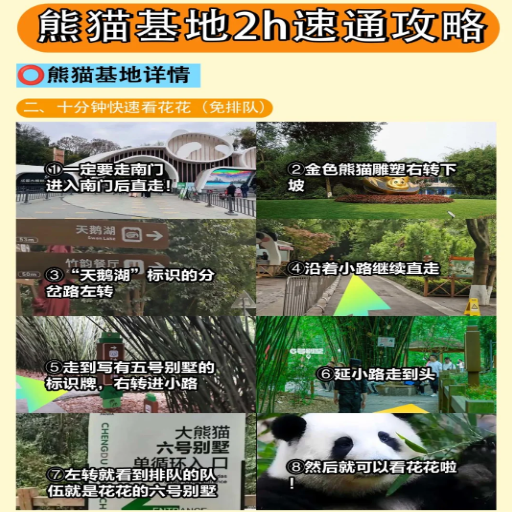
How to Get to the Chengdu Panda Base
The Chengdu Panda Base is conveniently located just 10 kilometers (6 miles) from the city center of Chengdu. Tourists can consider taking a taxi or a ride-hailing service, which can take anywhere from 30 to 40 minutes, depending on traffic. Visitors can also use public buses like Line 198 or Line 87, which stop close to the base entrance. Some tourists opt for guided tours, including transport to and from the base, to make things easier.
Taking the Metro Line 3 to Panda Avenue Station
Another option to reach Chengdu Panda Base is to take metro line 3 to Panda Avenue Station. Once you get to Panda Avenue Station, you can either use one of the shuttle buses provided by the base or take a short taxi ride to the base. The starting station you set off from determines the fare you will pay, between ¥2 to ¥5 ($0.30 to USD 0.70). Plan your journey to ensure you don’t miss the day’s final train, which leaves at 11 pm. The amount of time it takes to travel via metro differs greatly depending on distance and transfer time, however, on average it takes 30-50 minutes. This means of transport is ideal for people who are used to commuting.
Bus Options Directly to the Base
Taking a bus to the base is simple and cost-effective for travelers. Chengdu Research Base of Giant Panda Breeding offers direct buses from all parts of the city. An ideal option is Bus No. 198 or 198A, which services Tianfu Square and other essential transfer points in central Chengdu before terminating at the base. The average fare is highly affordable at ¥2 (USD 0.30). Visitors pay, on average, between 50 and 60 minutes for their journeys, but travel time does depend on traffic.
Buses usually run between 6:30 AM and 9:30 PM, so schedules should be confirmed beforehand. Instead, use a local transit app to monitor live timings and routes. Although the buses become busy during rush hours, they are the most economical way to get to the base.
Other Transportation from Downtown Chengdu
Besides buses, you may also use a taxi or a rideshare service like Didi. Taking a cab is faster, usually taking 30 to 40 minutes to get to the base, depending on traffic. The trip usually costs between 50 to 80 RMB. Rideshare services are equally convenient, and some may have deals that lower prices.
Chengdu Metro is also another option. A more economical and time-consuming method is taking Line 3 and transferring to Line 18, which entails navigating through numerous stations and walking from the closest stop to the base, increasing travel time. To have a more pleasant experience, verify the metro timetable beforehand, as most services are offered from 6 in the morning to 11 at night.
What Makes the Giant Panda Breeding Research Base Unique?
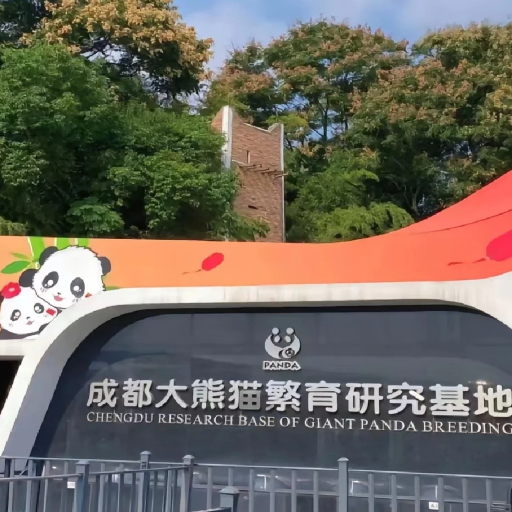
What Makes the Giant Panda Breeding Research Base Unique
The Giant Panda Breeding Research Base is a breathtaking facility whose aim is the conservation and research of giant pandas, a species that is loved across the globe. It employs sophisticated breeding methods and naturalistic habitats to ensure a comfortable and safe environment for the pandas. Tourists can learn about the biology, behavior, and conservation challenges these unique animals face while viewing them at exceptionally close range. The Center also focuses on education and motivates people worldwide to partake in conserving wildlife.
The Role of Panda Research and Conservation Efforts
The efforts made in panda research and conservation are critical in halting the extinction of this vulnerable species and addressing the imbalance of ecosystems. These efforts mainly focus on three areas:
- Habitat Restoration and Protection
- Setting aside the protected panda reserves in areas such as Sichuan, Shaanxi, and Gansu to protect natural panda habitats.
- Implementing reforestation programs aimed at improving bamboo supply, which is the primary diet of pandas.
- Captive Breeding Programs
- Employing sophisticated breeding technologies, for instance, artificial insemination, to enhance breeding efficiency.
- Managing the captives’ genetic structure enhances the captives’ welfare and the population diversity.
- Public Awareness and Education
- Launching campaigns and other forms of public work to motivate people all over the world to take part in conserving nature.
- Collaborating with global organizations for resource, research, and support exchanges for wide-ranging effects.
Thanks to these dedicated actions, over 1,800 pandas live in the wild, and panda populations are gradually recovering. Still, further research and effective collaboration will be essential to guarantee the continuity of this beloved species.
Highlights of the Moonlight Nursery and Panda Cub Care
The Moonlight Nursery is a facility dedicated to conserving and caring for giant panda cubs by providing an environment tailored to the development of the youngest individuals of the species. The complex care task starts by tracking pregnant pandas closely and waiting for potential births. A newborn panda cub’s life is highly delicate; they are born weighing only 3-5 ounces (90-140 grams) and measuring roughly six inches (15 cm) long, necessitating around-the-clock care.
Some highlights to look for include panda cubs being kept in climate-regulated incubators to keep their body temperatures from dropping too low, as they are born blind, hairless, and extremely weak. If a cub’s maternal mother cannot feed them, their milk formula is modified to be as close as possible to a mother’s milk. Infant panda cubs must be fed every two to three hours during the first few weeks of life. Care specialists also administer massages intended to help with digestion and encourage growth.
The nursery uses state-of-the-art surveillance systems, including infrared cameras and sensors, to monitor the panda cub’s weight, growth, and health parameters. By about 6 months, cubs begin to move around, which is a positive sign of their physical development. They can explore the environment while caregivers closely monitor their activities. This supervised exploration encourages behaviors necessary for their later reintegration into the wilderness. These activities ensure the young pandas are supported during the early months of most development, supporting conservation efforts worldwide.
Insights into the Giant Panda Museum
The museum focuses on enhancing the understanding of and the efforts put towards conserving the endangered giant panda, allowing users to participate in a fun and educational experience. The exhibits provide detailed information about giant pandas’ biology, unique habitats, and history. Some highlights cover pandas’ dietary needs, which are rich in bamboo, and their extraordinary premise of having an extra thumb to hold onto stalks. The museum uses advanced interactive features and augmented reality to show stuffed pandas and their environment. There are also conserved materials from different parts of the world, emphasizing the global breeding programs and the scientific efforts to save the species. Participants are introduced to the international efforts made to give a deeper appreciation for the giant panda and the impactful conservation initiatives in place to save these incredible animals.
Can You See Baby Panda at the Research Base of Giant Panda?
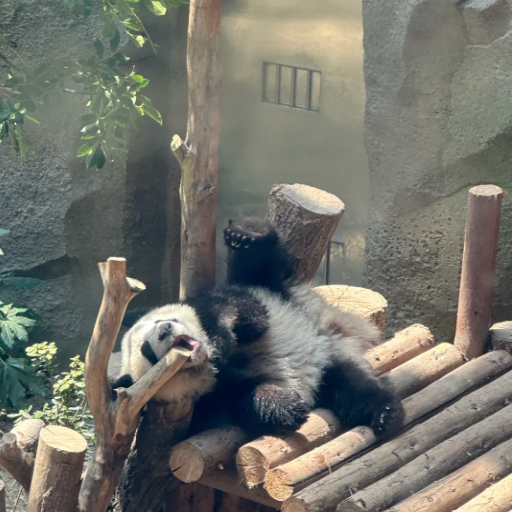
Can You See Baby Panda at the Research Base of Giant Panda
Yes, Giant Panda Research Base tourists can see baby pandas, especially in the nursery or during certain seasons when cubs are born. The base allows visitors to observe baby pandas growing under expert care, which is charming for people of all ages.
Visiting the Enclosure for Young Pandas in China
A visit to the panda cub enclosure in China is one of the rare occasions to observe these adorable and captivating animals in incredibly natural settings. The enclosures are specially crafted to provide the cubs with the comfort of their native environment, enabling them to thrive. Some of the highlights of the visit are:
- Viewing Times: Young pandas are primarily active in the early morning and late afternoon, so plan your visit accordingly.
- Climate Control: To ensure the pandas’ comfort, the enclosures are kept at moderate temperatures of 60–75°F (15–24°C).
- Observation Areas: Visitors are guided to specific areas where they can see the pandas without the danger of being injured by the animals, and they are also allowed to be undisturbed.
- Caretaker Demonstrations: At specific times, caretakers might show off feeding or offer brief talks on panda behavior and care while feeding.
The visit is educational and enjoyable, underscoring the efforts that go into raising and safeguarding these beautiful creatures.
Learning About Baby Panda Development
Cub pandas are born hairless and blind, weighing only three to five ounces. They begin to grow fur in the first 6 to 8 weeks of life and can start crawling at around 3 months. Baby pandas rely on maternal milk until they can begin to eat bamboo at around 6 months. They become more self-sufficient around age one when they typically weigh between 50 to 70 pounds. Essential factors to consider are the maintenance of an appropriate temperature for the nurseries, which should be approximately 77°F (25°C), along with a nondisturbing atmosphere that alleviates stress and a nutrient-parent diet rich in specialized milk during their early stages. All are aimed to mimic real-life conditions to guarantee healthy development.
What else should you do when you visit Chengdu?
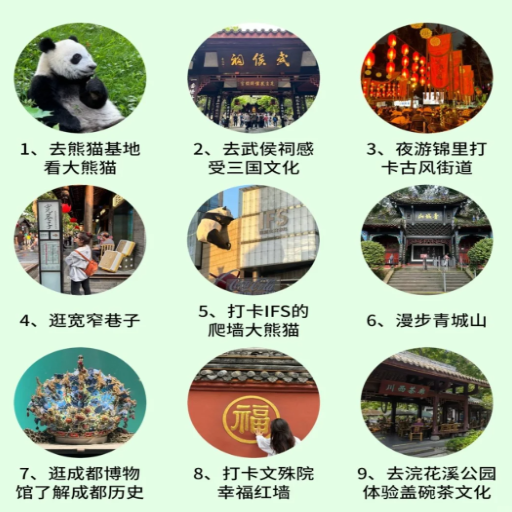
What else should you do when you visit Chengdu
Besides the panda base, Chengdu has a long list of fun activities. The Jinli Ancient Street is famous for featuring everything traditional to Sichuan culture, including food and different crafts. Mount Qingcheng is a peaceful Taoist site surrounded by nature and is perfect for nature lovers. Food enthusiasts must try the wide variety of authentic hot pot Sichuan or the different tea houses across the city. Moreover, the Wuhou Shrine and Du Fu Thatched Cottage are rich in cultural and literarymazing history.
Exploring Sichuan Province Attractions
In addition to its hot springs, Chengdu has another attraction popular with tourists due to its high demand as a health and beauty resort. It is also well-regarded for its stunning scenery. These are some of the places that stand out:
- Jiuzhaigou Valley
Jiuzhaigou is a UNESCO World Heritage Site admired for its matching lakes, waterfalls, and snow-covered peaks. The park sits at 2,000 to 4,500 meters, so visitors should prepare for potential altitude changes.
- Leshan Giant Buddha
Located at the confluence of three rivers, Leshan is home to the largest stone Buddha statue in the world. At 71 meters tall, this ancient wonder is a magnificent engineering work reflecting incredible artistry and devotion. Comfortable walking shoes are recommended for the steep ascent.
- Emei Mountain
Mount Emei boasts breathtaking natural landscapes and a rich cultural heritage. It is revered as a Buddhist holy place. People capable of walking may hike, while those less fit may use cable cars for easier trekking. The highest peak of the mountain is 3,099 meters.
- Huanglong Scenic Area
Huanglong is another UNESCO World Heritage site known for its brilliantly colored travertine pools, snow-covered mountains, and rich biodiversity. It is recommended that travelers visit between the spring and autumn months for the ideal experience.
- Sichuan Cuisine Spots
Sichuan Province needs no introduction when it comes to Sichuan classics. Kung Pao chicken, Mapo Tofu, and Dan Dan noodles are must-try dishes that showcase the brilliance of Sichuan cuisine.
Sichuan Province has natural beauties and cultural landmarks, which satisfy every tourist. Always remember to time your visits correctly based on the seasons, and be ready for the amount of altitude and weather changes.
Planning a Comprehensive Chengdu Panda Tour
A Chengdu Panda Tour is one of the unforgettable experiences where you can closely meet China’s national treasures, the giant pandas. Here’s a straightforward how-to guide on preparing the most enriching tour based on top sources for well-planned visits:
- Key Panda Bases to Visit
- Chengdu Research Base of Giant Panda Breeding
This base is the most popular and closest to the city at only 10km. It also has the best infrastructure for tourists to Chengdu- with well-paved roads, hotels, restaurants, and other attractions; it is also best for observing pandas of all ages as they live in their ethnological and ecological habitats. The base is open all year round from 7:30 am to 6:00 pm, and the entry fee for each person is about 58 CNY. Morning visits are suggested because of the high activity of pandas during feeding times at around 8-10 pm.
- Dujiangyan Panda Base
About 55 km from Chengdu, another facility focuses more on rescuing and rehabilitating the panda bear. Here, the visitors can also experience the Panda Keeper Experience, where they can help with tasks like cleaning and feeding the pandas (the program fee is around 700-900 CNY). These experiences have to be booked beforehand.
- Wolong National Nature Reserve
184 kilometers outside Chengdu sits Wolong, renowned for its scenic landscape and conservation efforts. It hosts the Shenshuping Panda base, which provides more immersive panda experiences. The reserve charges an entry fee of 80-100 CNY. However, transportation must be carefully planned ahead of time due to its remote location.
- Best Time to Visit
Wolong is more straightforward to visit in the cooler months between late September and early May. During this time, the weather is milder and pandas become more playful, in addition, the area is not too crowded during public holidays.
- Transportation and Travel Tips
- Getting There
- The Chengdu Research Base is conveniently accessible within 30 minutes through taxis and ride-hailing services from the city center.
- Private car hires or guided tours are more convenient for Dujiangyan and Wolong. The desired destinations are located 1.5-3 hours from these two cities.
- Panda Volunteer Programs
Ensure that programs like the Panda Keeper experience are booked well in advance using official channels. Volunteers must be between 12 and 65 and healthy enough to partake in light to moderate physical activity.
- Essential Preparations
- Because some bases necessitate walking around extensive areas, wearing comfortable bodily layers and walking shoes is advisable.
- Remember to bring water, snacks, and a camera for some memorable photos; however, avoid using flash photography as it may disturb the pandas.
- Look up any necessary health regulations, especially concerning COVID-19, to see what documents may be required.
When planned properly, your Chengdu Panda Tour is sure to be an engaging and educational experience with one of the treasures of China.
Where to Stay in Chengdu for Easy Access
During your panda tour in Chengdu, I suggest you stay in the city center or near the Wide and Narrow Alleys (Kuan Zhai Xiangzi). Both locations balance accessibility and convenience, featuring ample accommodation options for differing budget levels. For greater accessibility to the panda bases, you could also consider staying in the northern part of the city around the Chengdu Research Base of Giant Panda Breeding.
Suggested Accommodation Zones:
- City Center/Chunxi Road Area
- Proximity to restaurants and shopping streets along with access to public transport (subway line 2 and line 1).
- It is best suited for visitors wishing to see more parts of Chengdu besides the panda tour.
- Price Range: $50-$150/night (mid-range to luxury).
- Wide and Narrow Alleys Area
- Offers cultural charm and proximity to historic landmarks.
- Excellent choices for boutique hotels or guesthouses.
- Price Range: $40-$120/night.
- Near Panda Base
- Perfect for those prioritizing early access to the facility.
- Look for hotels or B&Bs within a 5-mile radius for convenience.
- Price Range: $30-$100/night (budget to mid-range).
Ensure your accommodation location has dependable transportation, such as shuttles or nearby taxi services. Visiting the panda base early in the morning is frequently suggested; therefore, distance and travel ease are essential factors.
References
Frequently Asked Questions (FAQ)
Q: What is the Chengdu Research Base of Giant Panda Breeding?
A: The Chengdu Research Base of Giant Panda Breeding is a renowned research facility dedicated to conserving and breeding giant pandas and other rare animals. It is one of the top places to visit in Chengdu, especially for those who want to see pandas up close.
Q: How can I get to the Panda Research Base from downtown Chengdu?
A: The base is approximately 1.5 hours from downtown Chengdu. You can take Chengdu’s metro line 10 or hire a taxi to reach the base conveniently. It is a must-visit spot on any China tour itinerary.
Q: What can I expect to see at the base of giant panda breeding?
A: Visitors can expect to see pandas of different ages, from cubs to adult pandas. The base also features a giant panda hall, a villa, and educational exhibits about wild nature and conservation efforts.
Q: When is the best time to visit the Chengdu Research Base of Giant Panda Breeding?
A: The best time to visit giant pandas at the base is in the morning when the pandas are most active. This timing provides an excellent opportunity to get better photos and enjoy watching the pandas during feeding.
Q: Are there guided tours available at the base?
A: Yes, the base offers guided tours in both Chinese and English. These tours provide detailed insights into the research facility’s panda breeding and conservation efforts.
Q: How much does it cost to visit the Panda Research Base?
A: The entrance fee typically costs around 58 yuan. However, prices may vary, so it is advisable to check before your visit to ensure accurate planning for your China tour.
Q: Can I see other animals besides pandas at the base?
A: Yes, the base is also home to other rare animals and aims to simulate wild nature environments for them. This makes it an interesting place for anyone interested in conservation and wildlife.
Q: What other attractions are near the Chengdu Research Base of Giant Panda Breeding?
A: Nearby attractions include the Jinsha Site Museum, Wuhou Temple, and Wenshu Monastery. These sites can enrich your cultural experience in Chengdu.
Q: Is the Chengdu Research Base of Giant Panda Breeding the same as the Wolong Panda Base?
A: No, they are different. While both are dedicated to panda conservation, the Chengdu Research Base is closer to the city and more straightforward for tourists. In contrast, the Wolong Panda Base is located further away in a more secluded area.